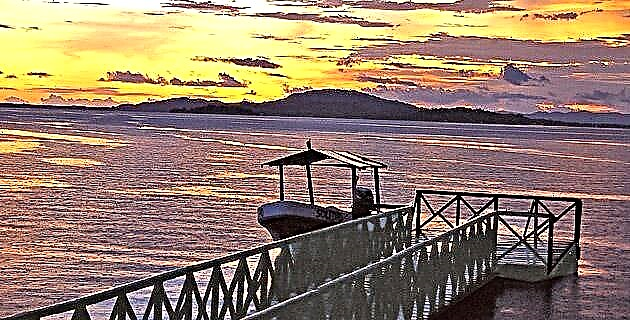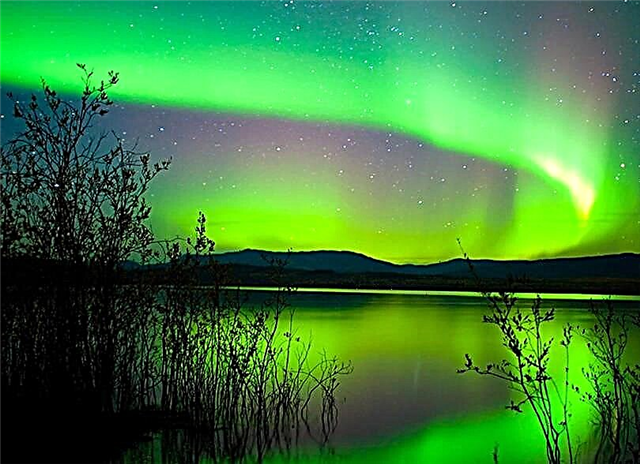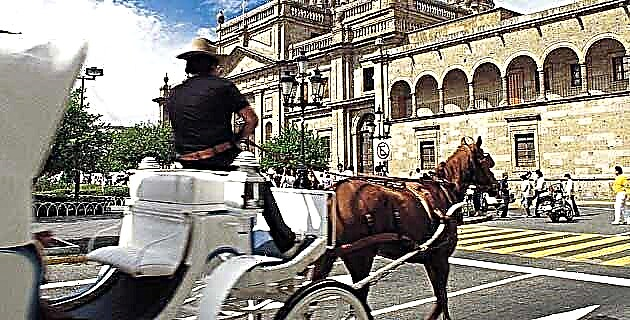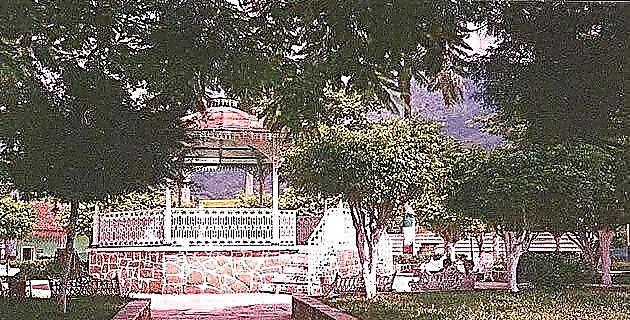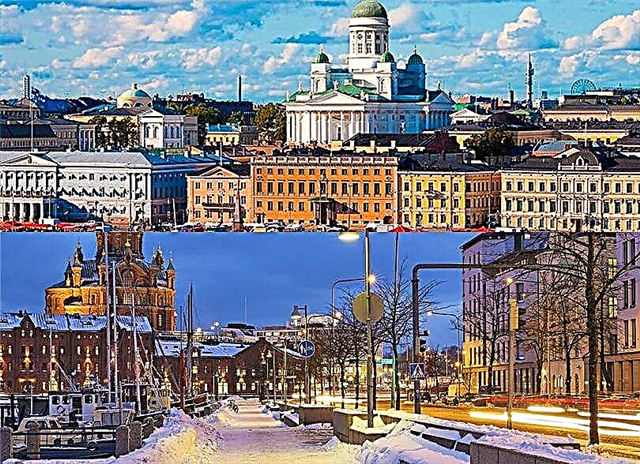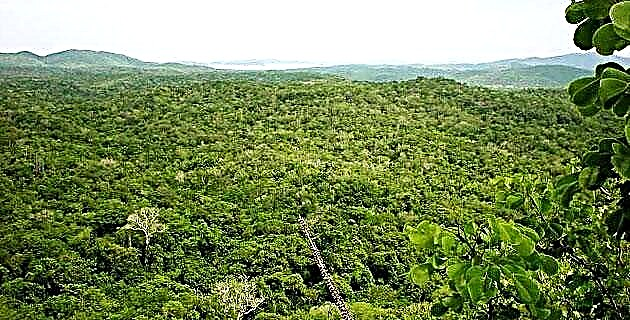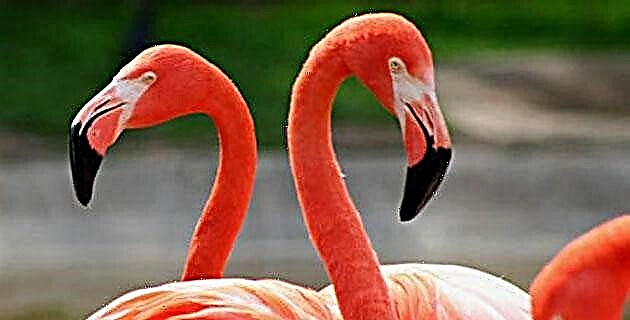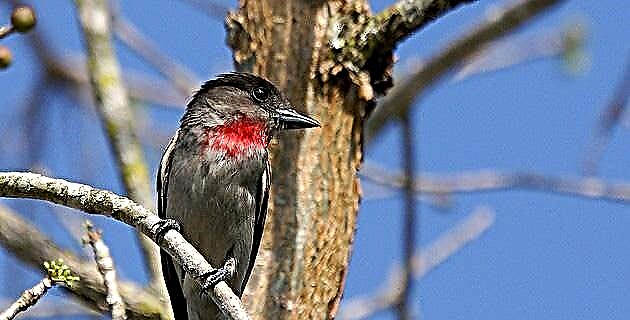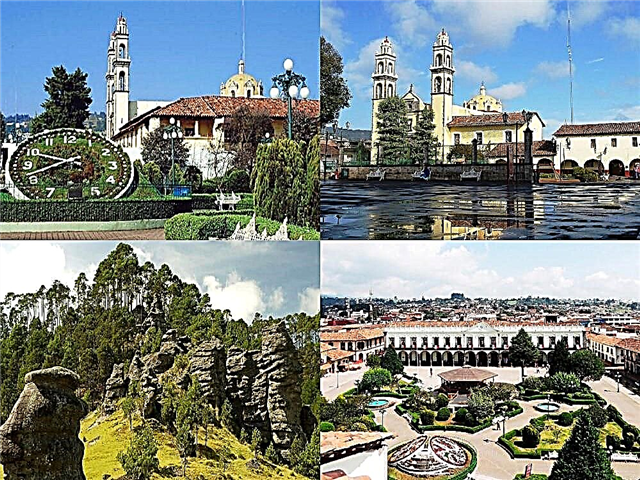This Puebla town with an excellent climate awaits you with its apple groves, its beautiful architecture, its clocks and much more. With this complete guide to this Magic Town You will not miss any detail of Zacatlán de las Manzanas.
1. Where is Zacatlán located?
Zacatlán de las Manzanas, or more briefly Zacatlán, is a town head and municipality located in the north of the state, in the Sierra Norte de Puebla, limited by a short western border with the state of Hidalgo. Zacatlán borders the Puebla municipalities of Ahuazotepec, Chiconcuautla, Huauchinango, Ahuacatlán, Tepetzintla, Tetela de Ocampo, Chignahuapan and Aquixtla. The state capital is 126 km away. from Zacatlán, while Mexico City is located 192 km. along Federal Highway 132D.
2. What is the weather like?
The city of Zacatlán has an exquisite mountain climate, protected by its altitude of 2,040 meters above sea level. In summer they are between 16 and 18 ° C, lowering the temperature to the range of 13 to 14 ° C in spring and autumn, and dropping two or three degrees more in winter. At times of maximum heat, the thermometer almost never exceeds 25 ° C in Zacatlán, while extreme cold is on the order of 4 or 5 ° C. It rains 1,080 mm a year in the Pueblo Mágico of Puebla, with rainfall concentrating between May and October.
3. How did Zacatlán come about?
The first stable pre-Columbian settlers of the territory were the Zacatecas, who in the 15th century were conquered by the Mexica lordship. In the 16th century the conquerors and the Franciscan missionaries arrived, beginning the construction of the convent. In the 18th century the town was already called Zacatlán de las Manzanas because of how well the fruit was produced. During the US intervention, Zacatlán was the provisional capital of the state of Puebla. It received the title of city in 1847 and in 2011 that of Pueblo Mágico.
4. What things to see and do in Zacatlán?
The natural emblem of Zacatlán is its striped apple and one of the events that must be enjoyed in the Pueblo Mágico is the great festival dedicated to the fruit. If the apple is the natural symbol, the cultural one is the magnificent flower clock that adorns the town; and another new timekeeping-related tourism flagship is the world's first moon phase floor clock built. Zacatlán also has beautiful architectural samples of artistic and historical interest, such as the Former Franciscan Convent, the Temple of San Pedro and San Pablo, and the Municipal Palace. Other mandatory stops are the Factory and Interactive Museum of Clocks and the Paseo de la Barranca Mural. For some good times of recreation in the open air, in deep communion with nature, there are the Tulimán and San Pedro Falls, the Piedras Encimadas Valley and the Barranca de los Jilgueros. You cannot miss a visit to Jicolapa, very close to Zacatlán.
5. What is the interest of the Ex Franciscan Convent?
This jewel of colonial architecture built between 1662 and 1567 is one of the first Christian buildings in America and the oldest on the continent that continues to perform religious services. The building is made of stone, with a gabled roof and a tower on each side; in one of the towers is the bell tower and in the other a clock was installed. During the restoration that began in 2009, original frescoes were rescued in which characters of the time appear in current activities, as well as jaguars, deer and other animals. Another attractive temple of the town is the parochial church of San Pedro and San Pablo.
6. What stands out in the Municipal Palace?
This majestic two-story building in neoclassical style with gray quarry reliefs was erected between 1876 and 1896 by the French architect La Salle. The first floor has a long portal with 17 semicircular arches supported by Tuscan columns, while on the second level, in total harmony, there are 17 French doors with dust covers. A clock is installed on the triangular tympanum that crowns the building. At the ends of the parapet there are vases as balusters.
7. What awaits me at the Interactive Watch Factory and Museum?
In 1909, Mr. Alberto Olvera Hernández manufactured a huge clock in Zacatlán de las Manzanas, without knowing that he was inaugurating a long artisan tradition that has been going on for a century. The III Generation Clock Factory, now in the hands of Don Alberto's grandchildren and relatives, continues to make its beautiful and large pieces and shows the public the manufacturing process of these ingenious mechanical devices to measure the passage of time. In the factory you can admire the process of making a watch, from the casting of the metal to the assembly and testing of its precise gears. In the museum located inside the factory, the tools and machinery used to make the first clock and some period pieces are exhibited.
8. What is the Flower Clock like?
This beautiful clock is undoubtedly the main cultural symbol of Zacatlán. It was a donation to the Olvera Clocks community when the plinth was remodeled in 1986. The 5 meter diameter clock has two faces and the long hands rotate over flowers and plants. It has electric sound and was the first of its kind in the world. Although it is electric, it has a string system that allows it to function mechanically for a period of time in the event of a power failure. The natural ornamentation changes according to the seasons and the clock marks the quarter hours and the hours with a chime that allows the reproduction of 9 melodies with mechanical chimes. Cute sky Y Mexico Beautiful and beloved are two of them.
9. What is the Moon Phase Floor Clock like?
Currently there is at least one monumental Olvera clock in 14 Mexican states, in several states of the American Union and in countries of the American continent and Europe. With Olvera pieces turned into artistic jewels around the world, the watchmaker made the decision to build the only floor clock with lunar phases existing in the world, inaugurating it in August 2013 in its showroom in the historic center of Zacatlán, within the framework of the 73rd edition of the Great Apple Fair. The piece quickly became a great tourist attraction and has the peculiarity of marking the moon phases in real time.
10. Where are the Tulimán and San Pedro Falls?
The beautiful Tulimán waterfall is located in the middle of the ecotourism park of the same name, which is located 16 km away. of Zacatlán. The current falls from about 300 meters, dividing into three sectors and in the beautiful place you can go hiking, rappelling, zip-lining, horseback riding and bathing in the refreshing waters. On the same property there is a smaller, but very beautiful waterfall, called El Cajón, with a hanging bridge. There is also a tree whose huge hollow trunk allows the entry of more than a dozen people. Another beautiful waterfall is San Pedro, a 20-meter waterfall located a few minutes from town, on the road to San Miguel Tenango.
11. What's in the Valley of Piedras Encimadas?
This valley located in the community of Camotepec, 25 km. de Zacatlán, is characterized by its huge and curious rock formations, some between 10 and 20 meters high. The configurations have the appearance of being stones that had been placed one on top of the other, hence the name of the place, but in truth they are monoliths sculpted in their surprising shapes by the forces of nature through millions of years. Thanks to the wind, rain, sun, volcanic activity and chemical reactions that occur in limestone structures, you can count on these natural beauties. In the area you can practice sports such as rappelling and mountain biking.
12. What is the attraction of the Barranca de los Jilgueros?
This ravine of more than 400 meters deep is a place of virgin nature that is very close to the historic center of Zacatlán. Although it has several accesses, the most advisable is the one that starts from the vicinity of the Tulimán Waterfall. In the ravine is the Cascada de las Tres Marías and the vegetation is so dense, that one would imagine being in the middle of a dense tropical forest, if not for the temperature. The place has pre-Columbian ruins and to the north there is a monolith with a footprint that is believed to be at least one million years old.
13. What is the Paseo de la Barranca Mural like?
On the Paseo de la Barranca, a beautiful and immense 100-meter-long mural was built that is an artistic expression of the town's history and its main traditions and places of interest. It was made with thousands of pieces of multicolored ceramics and recycled glass, according to the design of the American artist Trish Metzner-Lynch. At night, car headlights create a beautiful light effect on the 12 large apple-shaped mosaics, which include allegories of the local watchmaking tradition, waterfalls, indigenous communities and other wonderful village pictures.
14. What things of interest does Jicolapa have?
Only 3 km. from the center of Zacatlán is the town of Jicolapa, in whose chapel the Lord of Jicolapa is venerated, an image of Christ that appeared on the walls of the small temple. At Easter, thousands of faithful and tourists flock to Jicolapa to witness the staging of the Passion of Christ. In Jicolapa are Los Baños, a system of natural pools and pools ideal for taking a refreshing dip, fed from a spring called Los Siete Suspiros.
15. When is the Apple Fair?
Zacatlán produces thousands of striped apples a year, a variety that is only grown in the country in this Puebla municipality. Most of the production is transformed by soft drink companies and cider manufacturers. The main fair event in Zacatlán is the Great Apple Fair, which has been held in the Pueblo Mágico since 1941. The fair lasts for a week around August 15, the day of the Virgen de la Asunción, patron saint of fruit growers, and includes the election of the queen of the event, dance, music, traditional competitions, exhibition of artisan products and other attractions.
16. What are the local crafts and gastronomy like?
The main artisan line in Zacatlán is hand embroidery, a wide variety of pieces being made in the town, such as vests, blouses and tablecloths. They also work carving and saddlery. The emblem of the Zacatleco culinary art is cheese or cottage cheese bread. In the town there are several bakeries that have been preparing exquisite quilts, pillows and all the variety of bread stuffed with cheese for a long time. Among these traditional houses are La Fama de Zacatlán, La Nacional, Palafox and Panadería Vázquez. Between the end of October and the beginning of November, the Cheese Bread Festival takes place, in which several dozen bakeries and thousands of bread eaters participate.
17. What are the main popular festivals in Zacatlán?
Apart from the apple and cheese bread fairs, Zacatlán has other celebrations that keep the festive spirit of the town well toned throughout the year. The patron saint festivities in honor of San Pedro and San Pablo are on June 29. The Virgin of the Assumption is also highly venerated in the town and its festivities on August 15 are celebrated within the framework of the Apple Fair. The Day of the Dead, apart from the traditional residential altars, includes an exhibition of offerings in the zócalo. Cider also has its own festival, which takes place from November 13 to 21.
18. What are the best hotels?
Zacatlán has a cozy offer of cabins and inns that will make your stay in the Magic Town unforgettable. Cabañas El Refugio is a place to disconnect from the world in the middle of a wooded area. Xix Xanac has beautiful cabins with fireplace, hammocks and other comfortable details. The cabins at La Terra Grande are equally magnificent and the lodge offers a delicious breakfast. There are also Hotel Posada Don Ramón, Hotel and Cabañas Una Cosita de Zacatlán and Casa de Campo, among others.
19. Where to eat?
At Café del Zaguán they serve an excellent breakfast in a very pleasant atmosphere. La Casa de la Abuela is a Mexican food restaurant located at the entrance of the town and there are very good comments about the chicken with mole, the rabbit with tlacoyos and the pizzas. Tierra 44 has an extensive wine list to pair with its delicious food, standing out the rib stew with morita chili. El Balcón del Diabolo has an extraordinary view of a ravine at the south exit, as well as excellent meats and pasta on its menu.
We hope this guide will be of use to you during your visit to the charming Magical Town of Zacatlán de las Manzanas. See you very soon for another virtual tour.

